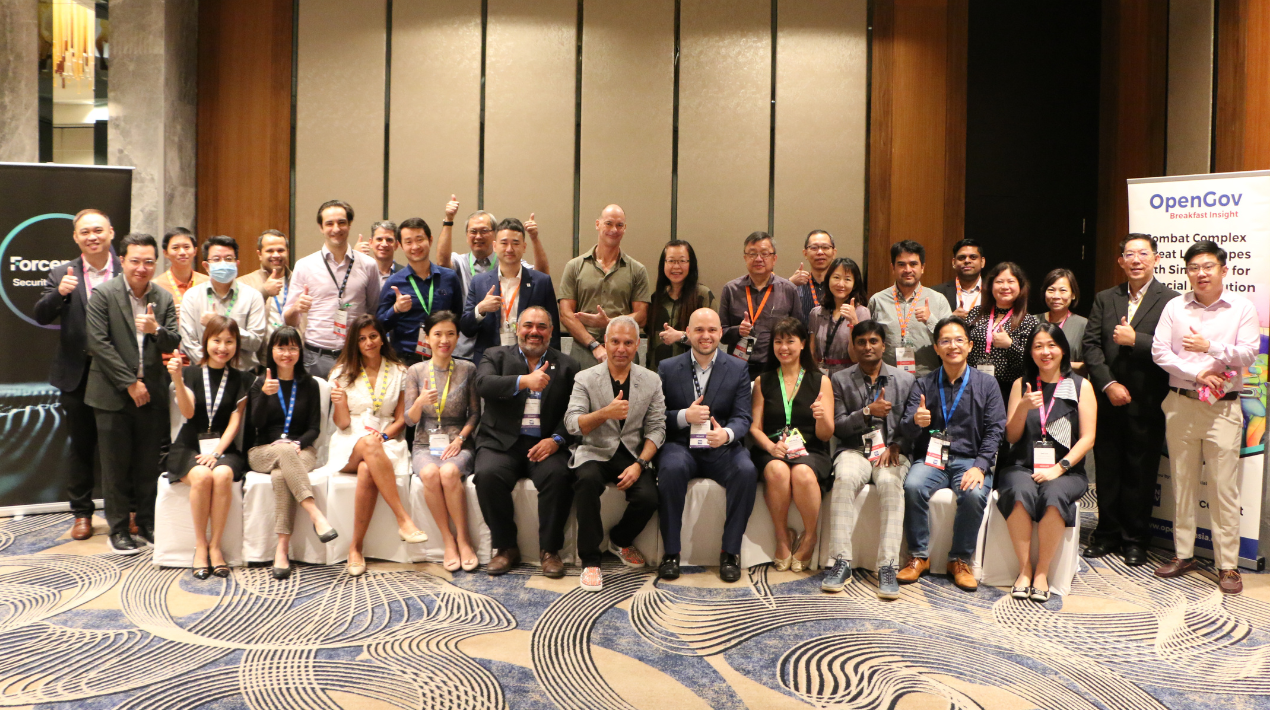
Employing a risk-based approach to cybersecurity is the optimal method for safeguarding an organisation against cyber threats due to the constantly evolving nature of these threats. IT Governance can provide valuable assistance in developing a comprehensive cyber risk management strategy, enabling firms to manage their security concerns in a structured manner.
With this, a cyber risk assessment is the first step in the process of managing the risk associated with cyber security. This assessment gives an overview of the dangers that could compromise the organisation’s cyber security along with an understanding of the severity of those threats.
Subsequently, the cyber risk management programme evaluates how to prioritise and mitigate these identified threats based on the organisation’s risk tolerance or appetite.
The MAS TRM Guidelines are a set of best practices and guiding principles developed by the Monetary Authority of Singapore to promote effective Technology Risk Management (TRM). These guidelines are meant to assist financial institutions in establishing robust governance and oversight frameworks to handle technological risk, enhance IT and cyber resilience and address other pressing concerns.
As per these guidelines, the corporate Chief Information Officers (CIOs) and Chief Risk Officers (CROs) should play a key role in various critical business operations, including technology deployment plans. However, due to the increasing importance of information and cyber resilience, these officers have been focusing more on security to ensure the protection of organisational data and systems from cyber threats.
In addition, recent reports suggest that in 2023 cybersecurity will be the primary area of investment for CIOs. This shows that organisations are prioritising reducing and managing risks to their operations in the face of increasingly sophisticated cyberattacks.
The OpenGov Breakfast Insight on 9 March 2023 provided the most recent information on risk management in today’s complicated and high-threat cyber environment for Singapore financial institutions.
Opening Address

Kicking off the session, Mohit Sagar, CEO & Editor-in-Chief, acknowledges that financial institutions in Singapore are heavily regulated and have implemented a variety of cybersecurity measures to safeguard themselves and their clients from cyber threats.
Mohit highlights the key components of cybersecurity in Singapore’s financial institutions, which include the regulatory framework, cybersecurity measures, threat intelligence, and staff awareness.
“For the most part, Singapore’s financial institutions have implemented a range of measures to protect themselves and their customers from cyber-attacks, indicating their commitment to cybersecurity,” observes Mohit. “However, as cyber risks continue to evolve and bad actors become more sophisticated, financial institutions must remain vigilant and proactive in their approach to prevent potential cyber-attacks.”
The cornerstone of an organisation’s protection against cyber-attacks is its cyber security architecture, which safeguards all IT infrastructure components. This includes safeguarding the Internet of Things (IoT) and cloud environments through the implementation of a robust cyber security architecture.
The current cyber security architecture in the finance industry is intended to safeguard financial institutions from cyberattacks while ensuring the availability, integrity, and confidentiality of financial data.
“Firewall and Network Security, Secure Application Development, Endpoint Security, Multi-Factor Authentication, Incident Response, and Compliance are among some of the most critical components of the cybersecurity architecture in the banking industry,” Mohit asserts.
Generally, the present cyber security architecture in finance is a multilayered strategy that integrates numerous technologies and processes to safeguard financial organisations and their consumers against cyber threats.
Due to the sensitive nature of the financial data managed by financial institutions, data protection is of paramount importance in finance. Financial institutions deal with huge quantities of sensitive data on a daily basis, including the personal and financial information of their customers, such as account numbers, credit card information, social security numbers, and other identifying information.
The success of cyber security architecture in finance can be determined by organisations’ capacity to prevent, identify and respond to cyber threats. Financial institutions can implement measures to limit the likelihood and effect of cyber incidents, even though no cyber security architecture can offer complete protection against cyber-attacks.
According to Mohit, being prepared to mitigate cyber threats demands a proactive and ongoing effort to identify and mitigate cyber risks, implement effective cyber security controls, and engage with internal and external stakeholders to strengthen the organisation’s cyber security architecture.
In this context, Zero Trust will undoubtedly affect the future of finance by providing financial organisations with a more secure and robust cybersecurity architecture.
Mohit emphasised that in the future, success will depend on “navigating through the people you know”. This is because these connections can provide valuable resources and information, especially when working collectively.
“When a person or organisation has a large network of individuals they can trust and who trust them, you can utilise their knowledge, talents and experiences,” Mohit concludes.
Welcome Address

Nick Savvides, Senior Director of Strategic Business, Asia Pacific, Forcepoint agrees people have had to alter their approach to almost all aspects of life due to the impact of the pandemic. This has resulted in significant changes to behaviour, the economy, technology and other areas.
“We’ve been forced to rethink our thinking and attitudes during the past few years. COVID-19 has triggered a massive paradigm shift in how we deploy tech in the way we, transact, learn and more.”
The pandemic has created major personal and professional challenges for people around the world. Ranging from health concerns to financial instability, its effects have been far-reaching and profound.
Due to the physical and emotional toll of the pandemic, many people have been devastated in multiple aspects – financially, health-wise and relationally. Companies have shut down, jobs have been lost and the global economy has suffered as a result. The unexpected loss of income and financial insecurity have caused untold numbers of people and families tremendous stress and anxiety.
The COVID culture has driven many individuals to adopt new methods of employment. Remote work has become the new normal for many, requiring individuals to adapt to new technologies and work-from-home arrangements.
Despite the difficulties, individuals have demonstrated resilience, flexibility and adaptability, finding new ways to connect with loved ones, work from home and support each other during these difficult times. It is a testament to the human spirit and the power of community to come together in the face of adversity.
“With the technology emerging, especially during COVID-19, security became paramount,” Nick observes. “The pandemic hastened the adoption of new technologies, particularly those that facilitate remote work and virtual interaction.”
Yet, this quick transition to digital solutions has also produced new security issues, as hackers have sought to exploit the increased usage of technology and its associated vulnerabilities.
The rapidly increasing remote workforce using online platforms for communication and collaboration has allowed cybercriminals to exploit vulnerabilities in these systems, gaining access to confidential information and financial data.
As a result, there has been an upsurge in the frequency of cyber attacks, including data breaches, identity theft, and other forms of online crime.
Furthermore, the requirement to secure remote access to corporate networks and systems has presented yet another security challenge. Businesses have been compelled to implement novel security methods and technologies to guarantee the safety of their networks and data as a growing number of employees work from home. Such measures have included the deployment of virtual private networks (VPNs), multifactor authentication, and other security protocols to prevent unauthorised access.
In addition, the need to secure remote access to enterprise networks and systems presents another security challenge. Companies have been compelled to deploy new security methods and technologies to ensure that their networks and data stay secure as more employees work from home. This has included the implementation of virtual private networks (VPNs), multifactor authentication and other security measures to prevent unauthorised access.
The pandemic has emphasised the need for stronger security controls and protocols as organisations rely on digital solutions. To safeguard their networks and data against cyber threats, businesses and individuals must remain vigilant and adopt appropriate measures. This may involve implementing new security technologies or simply being more mindful of potential risks.
The security problem posed by the pandemic highlights the significance of ensuring that technology is secure and robust against new and developing threats.
“Data is useful, and we should make the most of it. When we are finished, we must dispose of it, otherwise, we will become a targeted breach for those attackers,” Nick explains. “The concept of Zero Trust is particularly crucial for financial institutions, as they are confronted with numerous security risks and regulations.”
Implementing a Zero Trust policy enables financial institutions to ensure that confidential financial information remains inaccessible to unauthorised individuals and that customer service is governed by ethical and legal principles.
As technology continues to play a bigger role in society, it’s important to focus on making things simple and easy to use while simultaneously ensuring there are strong cybersecurity measures in place.
Nevertheless, security cannot be sacrificed in favour of simplicity. Cybersecurity threats are constantly evolving and becoming more sophisticated. Therefore, organisations must cybersecurity to their employees, stakeholders, and customers in clear, simple terms.
For technology to be used successfully, simplicity and cybersecurity must go hand in hand. Organisations can achieve simplicity without compromising security by prioritising user-centric design and implementing robust cybersecurity measures.
Organisations must define their commitment to cybersecurity and build trust with their stakeholders and consumers through clear and proactive communication.
End-User Insight

As the world becomes increasingly digitalised, more enterprises are shifting online. This can offer several advantages, including wider reach and reduced operational costs. However, it also presents new opportunities for cybercriminals to exploit and generate profits.
Lionel Bruchez, Chief Information Security Officer, UBS Singapore believes that “low-effort, low-risk attacks are one of the most prevalent ways for cybercriminals to generate income”.
These attacks are designed to be swift and simple to execute, with little skill or technical expertise. They frequently include exploiting software flaws or employing simple social engineering techniques to deceive users into divulging important information.
Cybercrime is a more lucrative and safer alternative to traditional illegal operations for criminals. The growth of the internet and the proliferation of digital technology have provided criminals with new opportunities to earn money without the inherent dangers of physical crimes.
Individuals and companies must take cybersecurity seriously and invest in comprehensive security solutions to protect their digital assets to battle this growing danger. In addition, law enforcement organisations must continue to adapt their procedures and plans to effectively pursue and convict cybercriminals.
Lionel feels that “There are several forms of cyber criminals, including hacktivists, terrorists, organised crime groups and insiders, among others.”
Hackers are well-structured and organised, whereas threat actors are more capable, coordinated and clever Cybercriminals use company structures with clearly defined primary functions and duties to optimise profit and return on investment.
The ransomware groups contact first access brokers and create their adverts, which include parameters such as region, industries, revenue greater than $100 million and reward price. In addition, these groups have access to victim infrastructure, undertake data exfiltration and encryption (double extortion), and publish victim data on a “name and shame” website.
Lionel also discussed some of the anticipated cyber threat trends for 2023 which include Geopolitical Conflicts, Cloud Security, Abuse of AI, Financial Motivated attacks, Internet of Things, Nth extortion attacks, Supply Chain Risk, C2 Framework, and Disinformation.
He believes that protecting an organisation’s assets should include the following:
- Identifying (a strong understanding of who the stakeholders are);
- Protecting (strong layer of defence);
- Detecting (empowering cyber monitoring);
- Responding (with strong capability to threats); and
- Recovery (a resilience aspect that once the organisation is targeted, the business would recover).
Having a layered defence, also known as defence in depth, is essential. It is a comprehensive security strategy that involves deploying multiple layers of security controls to safeguard against various potential threats.
This holistic security posture is based on the idea that no single security measure can provide complete protection. Therefore, by deploying several layers of security, an organisation can establish a more comprehensive, resilient and all-encompassing security approach.
Closing Remarks
Nick reiterates that cybersecurity is a critical issue in today’s digital age, as more activities are conducted online. While technology plays a significant role in preventing cyber-attacks, many other factors are equally important in ensuring the safety and security of digital information.
He believes that cybersecurity should be taught to be more than just compliance. “While compliance with cybersecurity regulations and standards is important, it’s equally important to understand the underlying principles and best practices that help protect against cyber threats.”
For him, collaboration is also critical in cybersecurity. Organisations collaborate to share information about threats and vulnerabilities to develop effective strategies for preventing and responding to cyber-attacks. This requires cooperation not only between companies but also between governments and international organisations.
Mohit is convinced that resilience and partnership are two critical concepts that are essential for personal and professional growth, as well as for building a strong and supportive community. Resilience pertains to the ability to overcome challenges, adapt to change and bounce back from adversity, while partnership refers to the collaborative effort of individuals or groups working together towards a common goal.
Resilience and partnership are closely linked, as both require a willingness to work together, share resources, and support each other in times of need. When individuals or groups work together in a partnership, they can better withstand adversity and overcome obstacles, enhancing their resilience. At the same time, a resilient community fosters partnerships that promote support and cooperation among its members.
“By building resilient partnerships, individuals and groups can create a strong foundation for success, even in the face of adversity,” Mohit concludes.
















